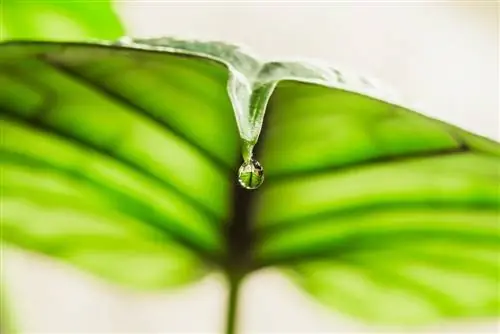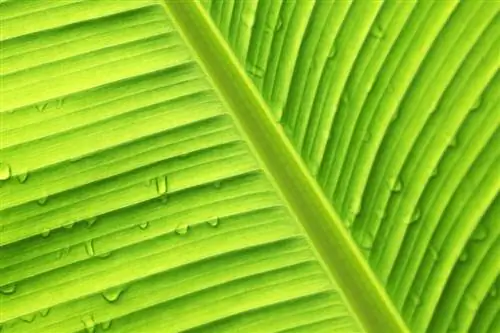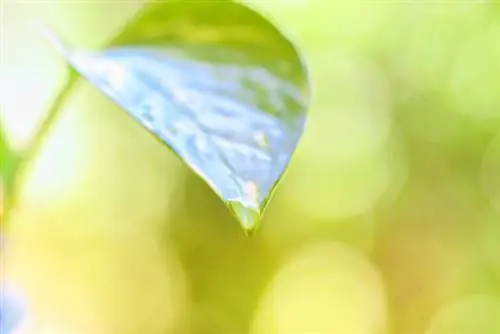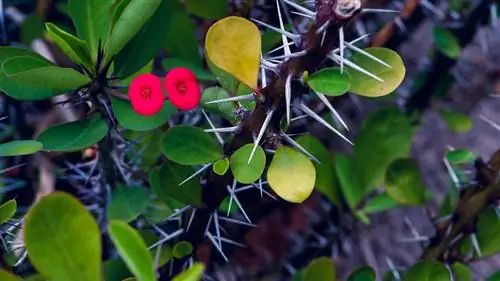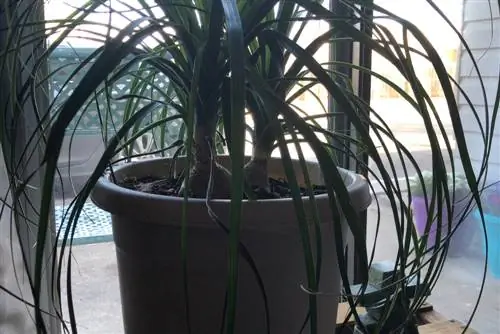- Author admin [email protected].
- Public 2023-12-16 16:46.
- Last modified 2025-01-23 11:22.
The Alocasia or arrow leaf is a popular houseplant that, if cared for well, produces numerous large leaves and perhaps even flowers. However, the arum plant also has some strange peculiarities. So the Alocasia sometimes drips. We'll explain why.
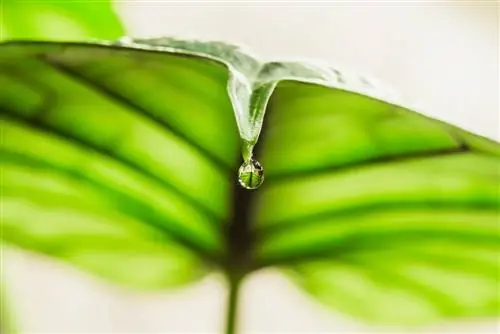
Why is my Alocasia dripping and what can I do about it?
The Alocasia drips due to guttation, a natural process in which the plant releases excess moisture through the leaves. To reduce guttation, you should adjust the amount of water and watering frequency, avoid waterlogging and ensure sufficient nutrient supply.
Why does Alocasia drip?
Many proud owners of an Alocasia initially suspect a pest or injury when they hear the first drop of their plant. But don't worry! The scientifically known phenomenon of guttation is completely normal, especially in tropical houseplants (including Monstera or Dieffenbachia) and occurs if you have overdone the watering. To put it simply, the plant releases excess moisture through the leaves. Normally it would evaporate, but when the humidity is high this is not possible and water drops roll off the tip of the leaf instead.
Does dripping harm the plant?
Quite the opposite! Guttation is actually a very he althy behavior for the plant, as it gets rid of excess water and can continue to supply itself with sufficient nutrients. A balanced water balance is immensely important for optimal nutrient supply, similar to the blood circulation in our body.
However, the water droplets can leave unsightly stains on the leaves after drying. These consist mainly of lime, but can be easily wiped off. Unfortunately, room walls or floors can also be affected by dripping water, which is why you should not necessarily place alocasias on a wooden floor or directly against a wall.
Are the drops poisonous?
Basically, alocasia, also known as elephant ear, is actually poisonous, although the milky sap in particular contains relevant toxins. Milky sap only occurs in the event of injuries, such as those caused by cutting back, which is why gloves should be worn if possible when cutting. However, the dripping water resulting from guttation does not contain any toxins.
How to stop Alocasia from dripping?
Unfortunately, it is not possible to completely prevent Alocasia from dripping. After all, this is completely normal behavior. However, you can reduce fluid release by adjusting the amount of water and frequency of watering. So make sure that the substrate is not permanently moist and let it dry a little before watering again. Instead, ensure high humidity by spraying the plant and fertilizing as needed to ensure a balanced supply of nutrients.
Tip
Avoid waterlogging
In general, you should definitely avoid waterlogging! If the soil in the pot is permanently wet, it not only affects root growth. The roots can rot, causing the plant to paradoxically dry out. Drying out occurs because the roots cannot pass on water or nutrients to the leaves. So ensure good drainage in the pot and don't water too much!

